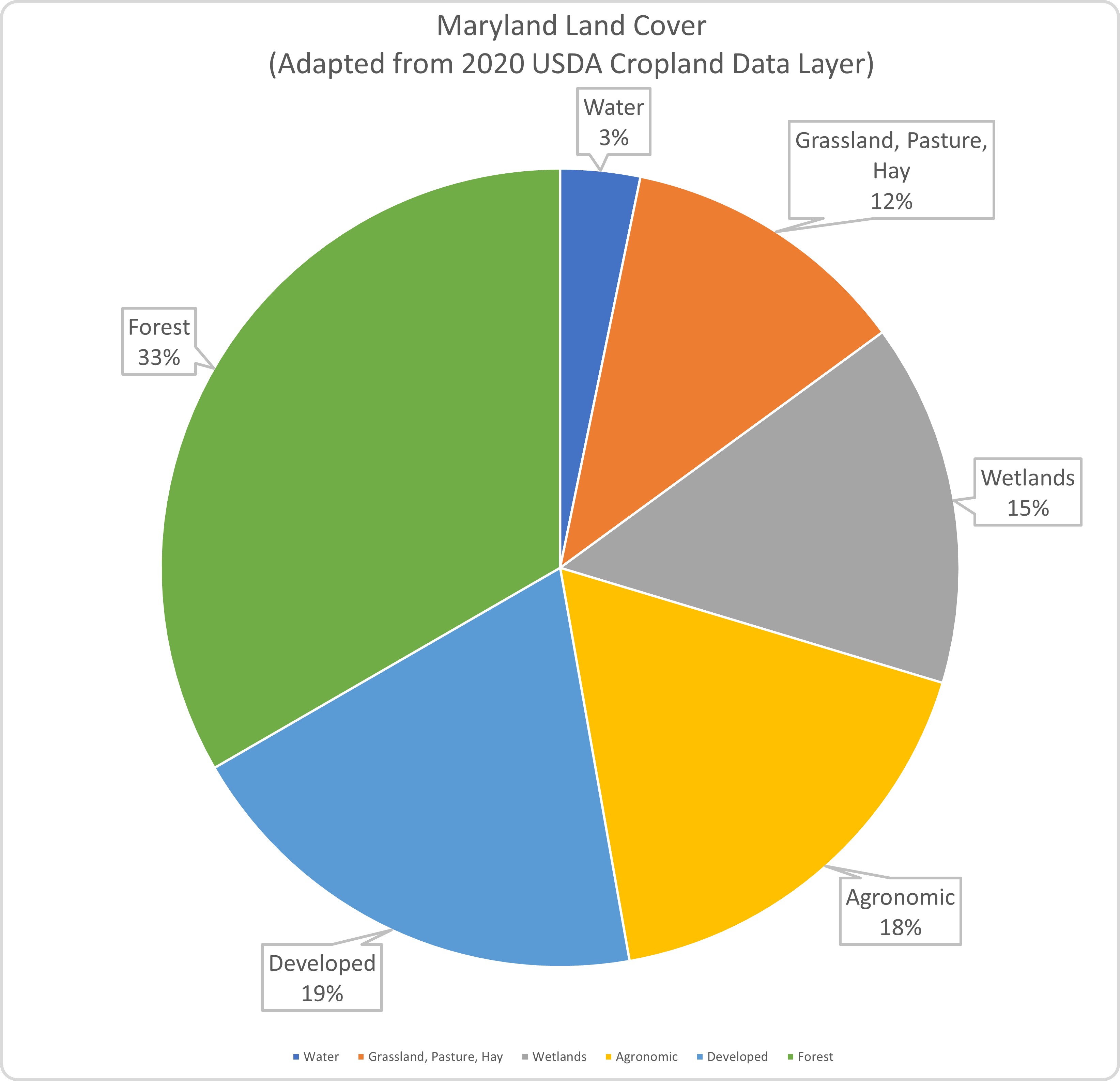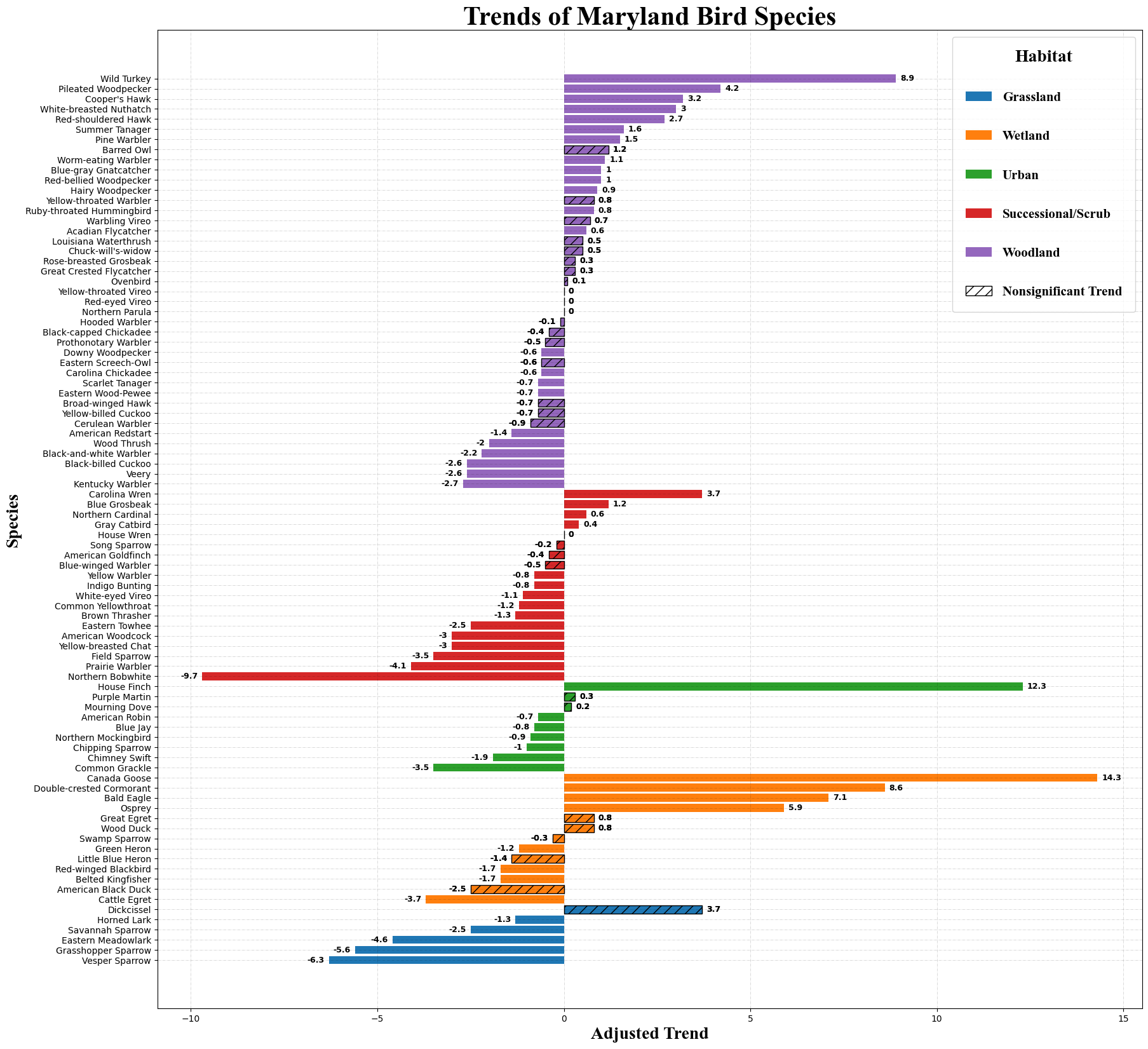Dr. Luke Macaulay conducts applied research and extension (outreach and education) in wildlife management and conservation, with a focus on practical approaches to enhance wildlife habitat and mitigate wildlife problems in agricultural, forested and grassland/shrubland systems. He focuses heavily on recovery of the northern bobwhite quail in Maryland. He runs a monthly Land & Wildlife Speaker Series exploring a diversity of topics related to wildlife management, and shares educational content regularly on X @LukeRangeWalker, LinkedIn, and YouTube.
A native of Texas, he pursued an undergraduate degree in a Great Books program at the University of Notre Dame and earned a dual major in Spanish, which he speaks proficiently. He worked for the U.S. Department of Justice from 2002-2007, first in the Antitrust Division and advancing to the position of spokesperson for the U.S. Attorney's Office in San Francisco. He returned to graduate school to earn a master's degree in range management (grazing lands) from the University of California, Berkeley, and continued on to earn his Ph.D. in rangeland & wildlife management. Upon earning his Ph.D., he worked for several years as an Extension Specialist in Rangeland Planning & Policy at the University of California, Berkeley, until starting his current position with the University of Maryland Extension. In December 2023, the Natural Resources Extension Education Foundation elected Dr. Macaulay as a Trustee to their Board.
His research and extension program include three major themes:
Working Landscapes: Luke seeks to provide education and research about compatible win-win solutions for improving wildlife habitat in conjunction with agricultural and forestry practices. Forests comprise 33% Maryland land cover, agriculture 18%, and grassland/pasture/hay comprising 12%. These land covers make up 63% of Maryland's land area and provide important habitat for the state's wildlife and are key to successful conservation. Projects I work on include forest management for wildlife, grassland/meadow management for declining grassland birds, and both attracting and deterring wildlife in agricultural settings. 
A particular area of focus is education and research for enhancing quality grassland, shrubland, and young forest habitat (i.e. early succession habitat) for the benefit of declining wildlife such as the northern bobwhite quail, ruffed grouse, eastern meadowlarks, native sparrows, woodcock, and pollinators. The North American Breeding Bird Survey shows these bird species have undergone the most significant declines by habitat type between 1966-2019 (see figure).
White-tailed Deer: Luke’s work involves the management of white-tailed deer populations, with a focus on better understanding deer behavior and preferences for warm-season and cool-season food plots and reducing damage in agricultural, forested, and suburban settings. A current focus includes determining the efficacy of forage soybeans as a buffer crop to divert deer from core agricultural production areas, which is funded by the Maryland and Delaware Soybean Boards.
Human Dimensions of Wildlife: Because over 92% of Maryland’s land is under private ownership, Luke’s program also seeks to better understand how farmers, foresters, and landowners interact with and manage their land for wildlife. His current work in this field involves conducting a landowner survey about wildlife management practices and is funded via a U.S. Department of Agriculture McIntire-Stennis Grant. He is also conducting a nationwide analysis of state policies related to wildlife management in partnership with the Property and Environment Research Center.
Luke mentors undergraduate, graduate students and postdoctoral scholars to support his outreach and research. His goal is to help provide his students with the skills that will make them attractive for future employment in the career they seek, including the fields of natural resource conservation & management; data science; GIS; marketing presentations, and extension; and an academic career.
Luke is an affiliate faculty in the Departments of Plant Science & Landscape Architecture, and Environmental Science and Technology. He is an FAA certified drone pilot utilizes aerial and thermal imagery to better understand wildlife populations and habitat. He has served on the editorial board of Rangeland Ecology & Management. He currently serves as the President of the Maryland-Delaware Chapter of The Wildlife Society.
Twitter: @lukerangewalker
Education
Ph.D. University of California, Berkeley
M.S. University of California, Berkeley
B.A. University of Notre Dame
Publications
Siegel, K.J., Macaulay, L., Shapero, M., Becchetti, T., Larson, S., Mashiri, F.E., Waks, L., Larsen, L. and Butsic, V., 2022. Impacts of livestock grazing on the probability of burning in wildfires vary by region and vegetation type in California. Journal of Environmental Management, 322, p.116092. (Download PDF)
, T. 2021. Which farms drill during drought? The influence of farm size and crop type, International Journal of Water Resources Development. (Download PDF)
Yovovich, V., Allen, M.L., Macaulay, L.T. and Wilmers, C.C. 2020. Using spatial characteristics of apex carnivore communication and reproductive behaviors to predict responses to future human development. Biodiversity and Conservation. 29:2589–2603. (Download PDF)
Hopkinson, P., Hammond, M., Bartolome, J. W., Macaulay, L.T. 2020. Using consecutive prescribed fires to reduce shrub encroachment in grassland by increasing shrub mortality. Restoration Ecology. (Download PDF)
Macaulay, L., & Butsic, V. (2018). Who Owns California’s Cropland. ARE Update, 21(3). (Download PDF)
Ratcliff, F., Bartolome, J., Macaulay, L.T., Spiegal, S., & White, M. D. 2018. Applying ecological site concepts and state-and-transition models to a grazed riparian rangeland. Ecology and Evolution. (Download PDF)
Macaulay, L.T. & Butsic, V. 2017. Ownership characteristics and crop selection in California cropland. California Agriculture. 71(4):221-230. (Download PDF)
†Shapero, M., Dobrovna, I., Macaulay, L.T. 2017. Implications of changing spatial dynamics of irrigated pasture, California’s third largest agricultural water use. Science of the Total Environment 605–606: 445-453. (Download PDF)
Macaulay, L.T. 2016. The role of wildlife-associated recreation in private land use and conservation: Providing the missing baseline. Land Use Policy 58: 218–233. (Download PDF)
Macaulay, L.T. 2015. Pastured Pig Production in California Oak Woodlands: Lessons from the Spanish Dehesa. In: Outdoor Hog Production: Best Practices for Conservation in the San Francisco Bay Area. UC Cooperative Extension.
Huntsinger, L., Sayre, N., Macaulay, L.T. 2014. Ranchers, land tenure, and grass-roots governance: maintaining pastoralist use of rangelands in the U.S. in three different settings. In: Davies, J. (ed). The Governance of Rangeland: Collective Action for Sustainable Pastoralism. (Download PDF)
Macaulay, L.T., Starrs, P.F., Carranza, J. 2013. Hunting in Managed Oak Woodlands: Contrasts Among Similarities, in: Mediterranean Oak Woodland Working Landscapes. Springer, pp. 311–350. (Download PDF)